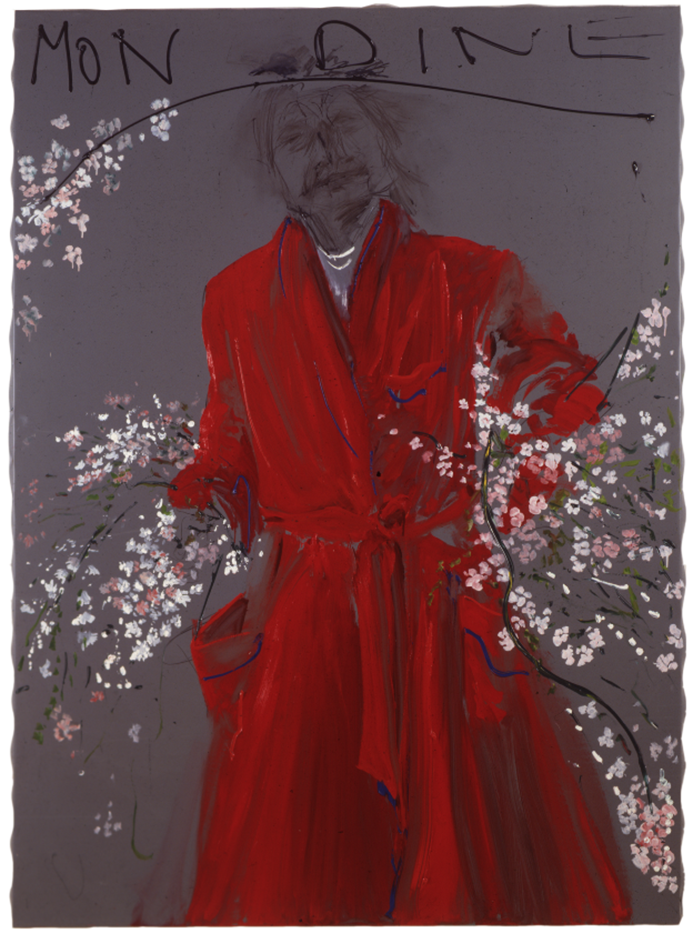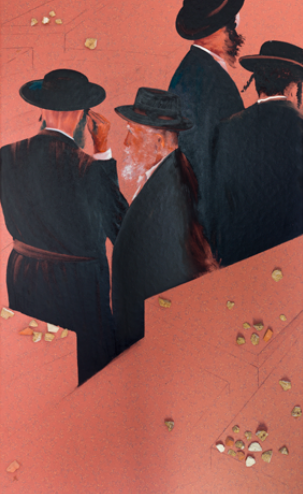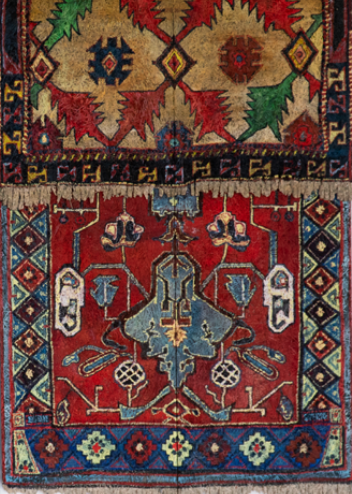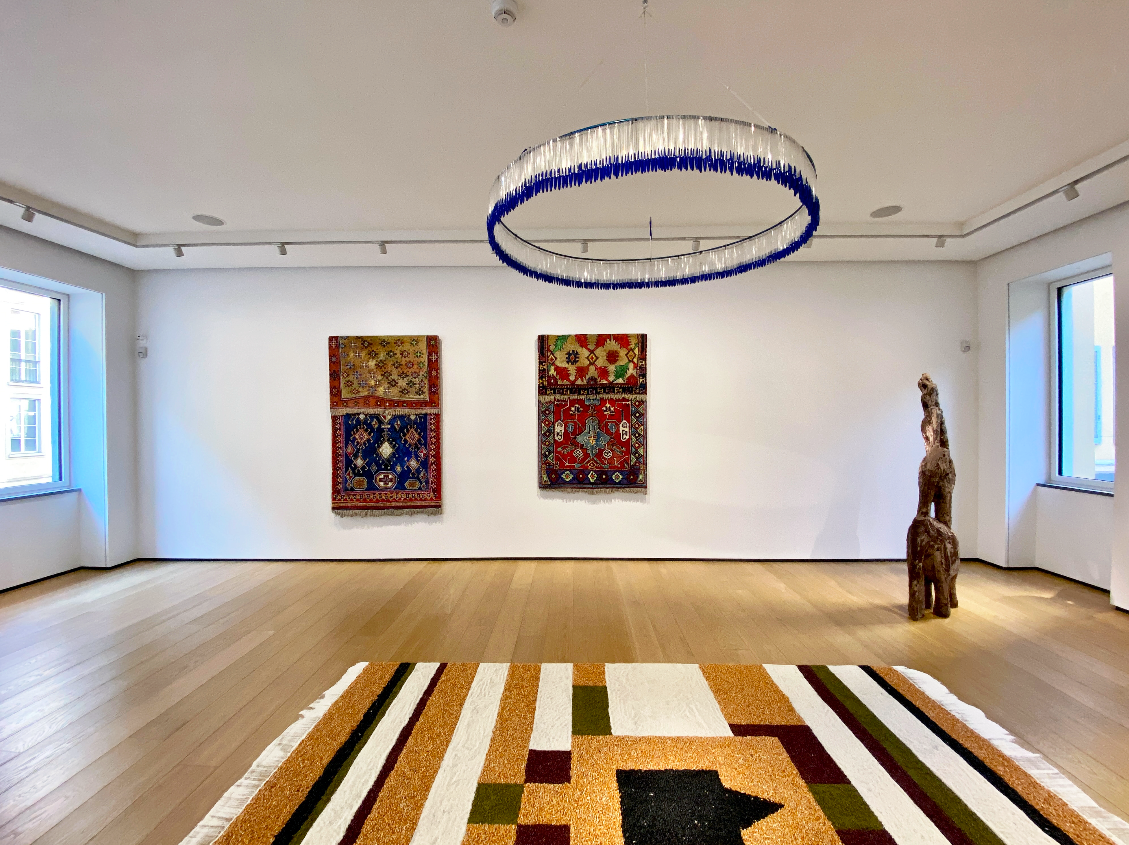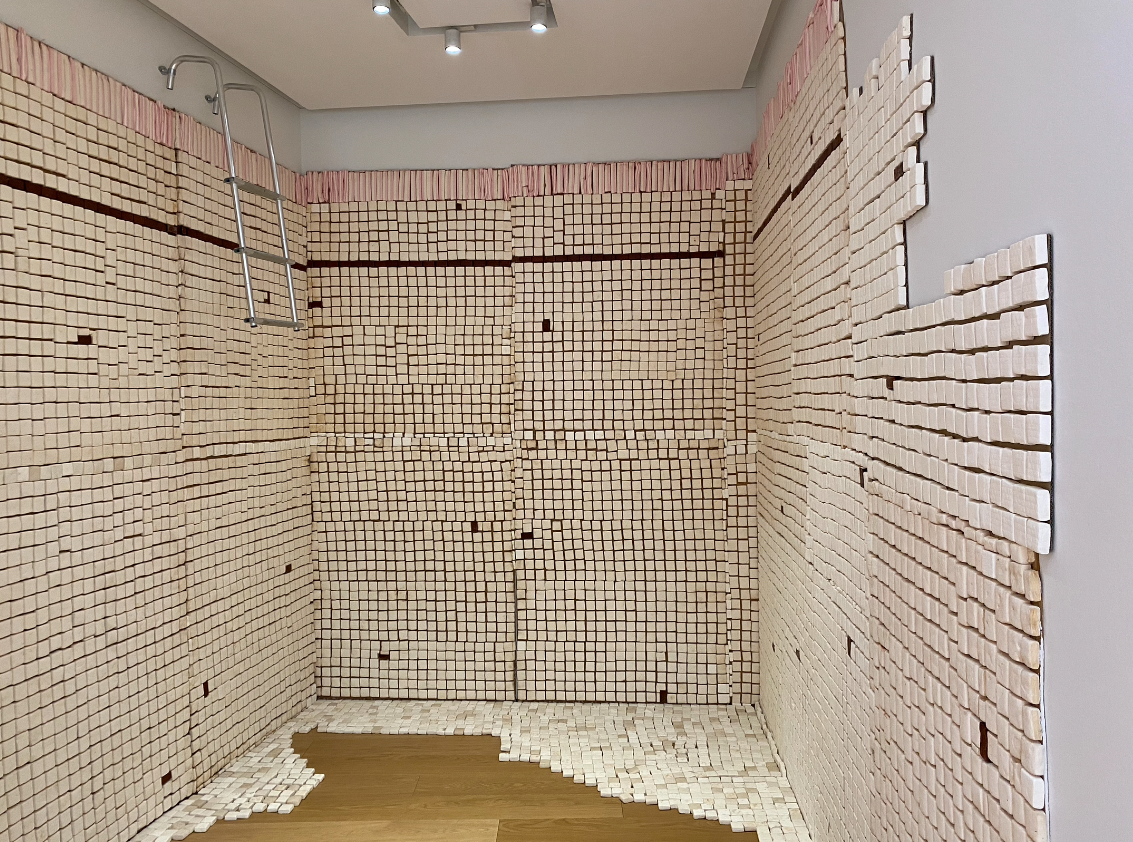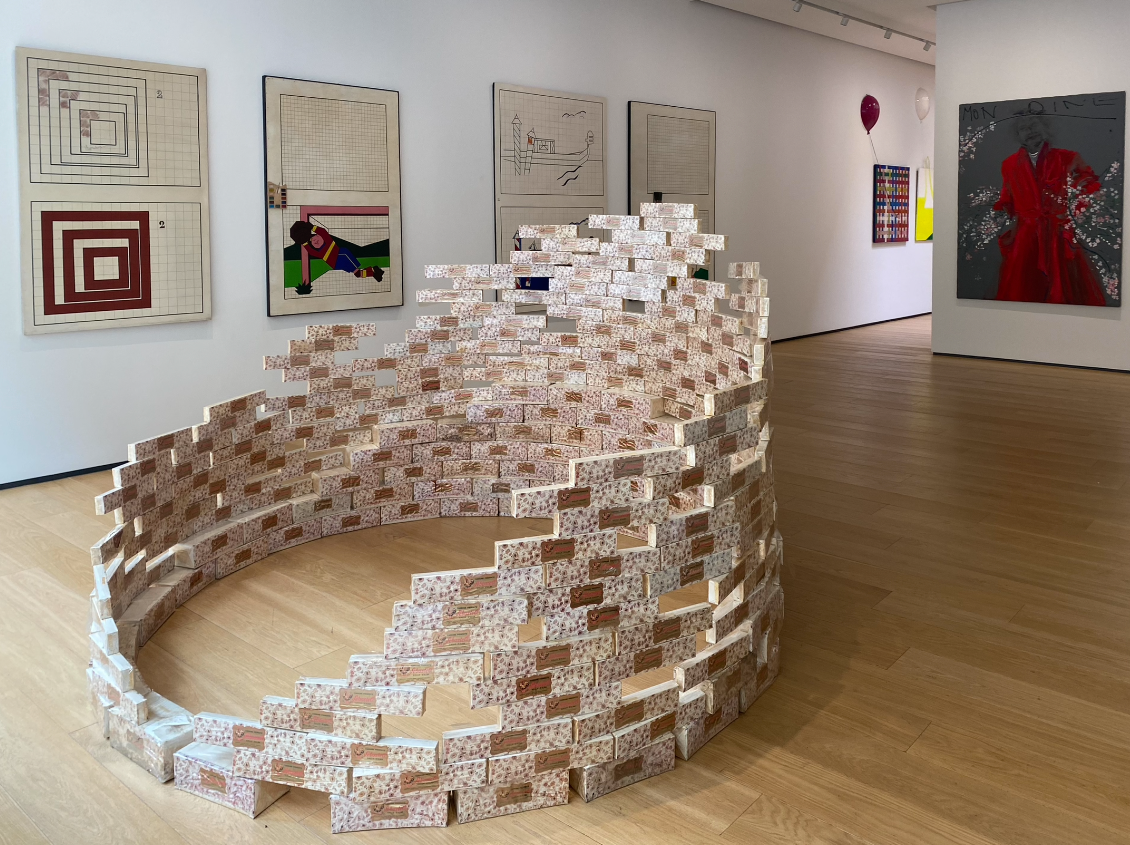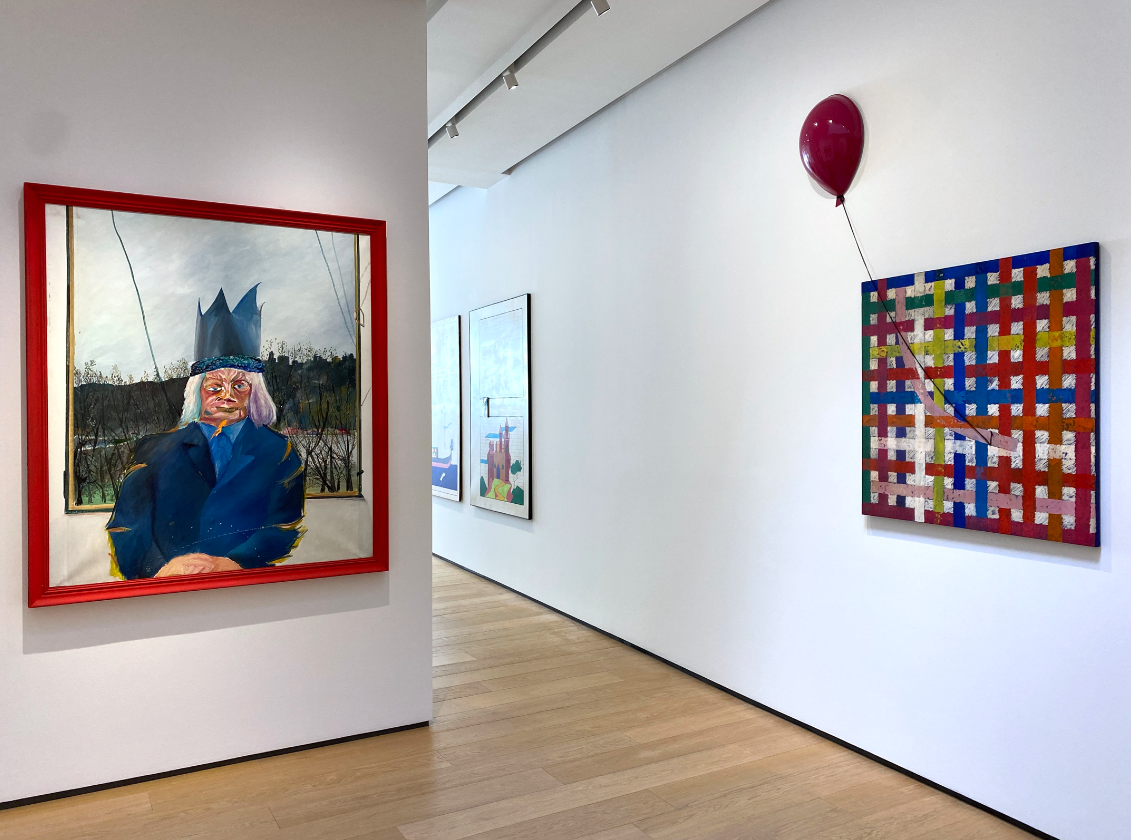Aldo Mondino. Regole per l’inganno
05.04.2023 – 17.06.2023
BUILDING is pleased to present, from April 5th to June 17th, 2023, the exhibition Aldo Mondino. Regole per l’inganno, curated by Alberto Fiz with the collaboration of the Aldo Mondino Archive, dedicated to one of the most important artists on the post-war international scene.
Through a selection of about forty works, including paintings, drawings, sculptures and installations realised between 1963 and 2003, the retrospective retraces the ground-breaking stages in the work of Aldo Mondino (Turin, 1938 – 2005), highlighting the originality of his ironic and transgressive research that constantly challenged the aesthetic dogmas that prevailed since the 1960s.
Although an active participant in the Arte Povera movement, Mondino foresaw the crisis of ideologies well in advance. “His passion for art in its endless variations steered him towards deliberate opposition to a homologated system, sparking off a process of misappropriation that allowed him to develop a controversial and highly topical dialogue with contemporary art”, says Alberto Fiz.
Mondino’s research has had the power to affect the language of art, becoming a point of reference for the younger generations of artists, as demonstrated by the work of Maurizio Cattelan. In an imaginary interview (but not so imaginary) with Mondino, he has him say, “I was once convinced that today’s society was on the verge of the abyss and that I should be the last of its witnesses”.
Aldo Mondino. Regole per l’inganno is on display on three of BUILDING’s exhibition floors.
The itinerary begins on the ground floor where the long-distance dialogue with Art is clear, starting with the emblematic work Torre di torrone (1968). Here architectural artifice takes the form of a construction made of nougat boxes. The experience of the 1960s is retraced through a series of conceptual works such as Palloncini (1965-1972), which entails paintings that seem to float upwards, in an optical illusion motivated by the movement of a balloon that seems to carry the painting with it (among the Palloncini is also the work titled Analogia con Paolini of 1967) – and the series Quadri a quadretti (1963-1964) – in which every form of rule is overturned using the image as a tool of provocation, where the loss of the aura and a regression of signs allows the work to regain a new importance. Then there are the Cadute and Bilance where Mondino transforms painting into a physical experience by using pigment like a raw material, pursuing an approach parallel to that of Arte Povera, which in the same years questioned concepts such as weight, tension and balance. Together with Mon Dine, a large portrait where his own image blends with that of the American artist Jim Dine, and a rare series of drawings, the ground floor ends with the surprising marshmallow pool (soft little cylinders of sugar) composed of a flavoured mosaic to immerse oneself in Mondino’s unreachable “waters”, given that what is usually a place of well-being is not only ephemeral, even a little nauseating, but lacks an access since the pool ladder is positioned too far up.
On the first floor, the exhibition centres on what are perhaps the most popular aspects of Mondino’s art, namely those relating to the Orient, the result of extensive research that began in the early 1980s. On display are, among others, the work The Byzantine World (1999), made of 12,000 chocolates, and some important works from the series Tappeti stesi (1990-1992) made of heraclite, an industrial material used in the building industry, where the overlapping antique carpets become the occasion for fresh experimentation. Finally, looking up we see Jugen stilo (1993), the famous chandelier made of Bic pens, a nod to the Jugendstil decoration as well as the specimens found in mosques. On the floor is Raccolto in preghiera (1986), an ephemeral carpet of grains with an ambiguous title where “collected” identifies the spiritual recollection of the faithful but also the benefits for the farmer.
Aldo Mondino. Regole per l’inganno also offers a selection of works on Jewish topics, where religion is tackled with the usual irony filtered through a specific attention to traditions and rituals. The bronze sculpture Gerusalemme (1988) with the hats of the Orthodox resting on a palm tree that becomes a coat rack, as well as two emblematic paintings, 18 KISLEV 5751 (1990) and Metterci una pietra sopra (1999), are presented in this context. Then comes the reconstruction of Muro del pianto, an imposing installation, a wailing wall of white sugar and cane sugar incorporating real bushes that stretches for six metres, evoking the holiest Jewish site.
The investigation into materials which underpins the visual deceptions which characterised Mondino’s work is accompanied by his plastic or sculptural research, which is sometimes neglected. A touch of the exotic is represented by Scultura un corno with a series of stacked elephants covered in chocolate, one of Mondino’s favourite materials. This choice changes the status of his works from monumental to symbolically edible.
Focusing on the artist’s ongoing relationship with the history of art, the second floor of the exhibition is entirely dedicated to tributes, presenting a transversal journey through genres, styles and myths. Mondino achieved a meta-artistic operation with a 2003 mosaic emblematically titled Calpestar le uova, which ironically references Maternità con le uova, one of the most characteristic subjects in Felice Casorati’s painting that can also be found in a historic 1964 composition, Pittura coprente. The series of tributes ranges through the historical avant-gardes with La mamma di Boccioni, a bronze work based on a mint candy version to which the artist added two bowling balls in place of breasts. Then comes Ortisei after Marcel Duchamp, which explicitly quotes Tonsura, the portrait that Man Ray made of him in 1919 with the five-pointed star in his hair. It could not be complete without Ruota di bicicletta, transformed in 1980 by Mondino into Ciclo e riciclo with a bicycle wheel and the addition of Venetian shoes. To his close friend Alighiero Boetti, with whom he shared many passions and in particular, trips to the Orient, Mondino dedicated a group of paintings, Ali-Ali-Alighiero, Essaouira: the triptych, almost three metres long, is one of the most important in the series: the sky of the Moroccan city much loved by the two artists, and the flight of the seagulls recalls not only the skies, but also Boetti’s famous areoplanes. The exhibition is completed by Mondino’s paintings and several rare portraits in the same format that refer to art, music and literature in a roster that includes some famous protagonists of art and culture, André Masson, Gertrude Stein, Otto Dix and Arnold Schönberg. They represent an extraordinary pictorial magic by an artist who succeeded in reinterpreting a genre as seemingly obsolete as portraiture.
